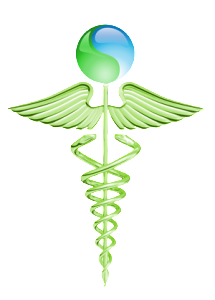
Although Westerners commonly view dandelions as a type of weed, this plant has several beneficial effects on human health which western medicine has only begun exploring. Dandelion has been used for centuries both internally and externally by Asian cultures as a medicinal used for digestive disorders, appendicitis, and breast problems (such as inflammation or lack of milk flow). Now we find this plant being studied by western science for its medicinal value.
The most recent study is a German study completed in 2009. As a result of this and other German studies dandelion root has been approved in Germany for, “… anorexia, dyspepsia, and biliary abnormalities,” (Garner-Wizard 2009). In non-medical jargon dyspepsia is indigestion and biliary abnormalities are bile duct disorders. Bile is essential for digestion. It is a fluid secreted by the liver and gall bladder to emulsify fats for digestion. Researchers found dandelion increased the flow of bile by 3 to 4 times.
Dandelion root is also commonly used as a diuretic. Furthermore, a case study that was carried out on 24 patients found that dandelion can be used to significantly reduce the pain associated with chronic colitis, as well as help to normalize the stool. This plant has also been found to have anti-cancer properties, as well as the ability to lower, “… elevated liver enzymes in hepatitis B patients.” Wow, powerful weed, no single western drug exists which can make these claims in a single pill.
The active substances of dandelion roots (those that have medicinal effects) include: sesquiterpene lactones, phenylpropanoids, triterpenoid saponins, polysaccherides, and inulin. Sesquiterpene lactones are found in numerous plant species and are believed to have anti-inflammatory and anti-cancer properties. Phenylpropanoids appear to have inflammation-modulating properties, while triterpenoid saponins are adaptogenic (combat stress), a property of many Chinese herbs. The polysaccherides present in dandelion may have positive effects on the immune system, as polysaccherides in general are, “… key intermediaries in immune interactions,” (Garner-Wizard 2009). Inulin is a type of dietary fiber and we can all use that in our diets. If that wasn’t enough to make your head spin, dandelion roots also have been found to have a soothing property for indigestion. Current studies are underway using dandelion extract for diabetic patients- results have yet to be finalized, but the study hopes to regulate the AGE’s or advanced gycation endproducts, harmful chemicals produced by those with high blood sugar levels.
Extracts from the dandelion plant have been labeled as GRAS (generally recognized as safe) for use in supplements and food, and both the root and leaf can be ingested as food (up to 50 grams per dose). This plant is common throughout the world and is currently at no danger of being overharvested. However, many people spray dandelions with herbicides in urban areas. Thus it is better to avoid dandelions in these areas, which is true of any herbal product. So next time you see that dandelion growing between the sidewalk cracks, you will know it as one of nature’s wonderful medicinal plants, not just an obnoxious weed.
References:
1. Garner-Wizard M. Re: Monograph of Dandelion. Integrative Med. April-May 2009; 8(2): 34-38. http://cms.herbalgram.org/herbclip/378/review050496-378.html.

Source by Cathy Margolin
 Vitamin Agent The Health & Naturalistic Source
Vitamin Agent The Health & Naturalistic Source



